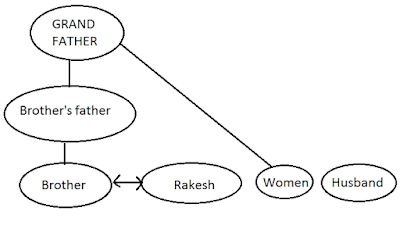41. 'Fly ash' produced in thermal power plants is an ecofriendly resource for use in:
(a) agriculture as micro-nutrient
(b) wasteland development
(c) dam and water holding structures
(d) brick industry
Choose the correct answer from the code given below:
(a) agriculture as micro-nutrient
(b) wasteland development
(c) dam and water holding structures
(d) brick industry
Choose the correct answer from the code given below:
42. Which of the following types of natural disasters has no definite beginning and end?
Answer: (4) Droughts
Drought is the correct answer for your question "which of the natural disaster has no definite beginning and end"
https://brainly.in/question/4773333
Drought is the correct answer for your question "which of the natural disaster has no definite beginning and end"
https://brainly.in/question/4773333
43. Assertion (A): Indoor air pollution is serious hazard.
Reason (R): The dispersal of air pollutants is rather limited in indoor environment.
Choose the correct answer from the code given below:
Reason (R): The dispersal of air pollutants is rather limited in indoor environment.
Choose the correct answer from the code given below:
Answer: (1) Both (A) and (R) are true and (R) is the correct explanation of (A)
Here, both A and R statements are correct. But the R doesn't explains anything related to the serious hazard due to Indoor air pollution.
Here, both A and R statements are correct. But the R doesn't explains anything related to the serious hazard due to Indoor air pollution.
44. In terms of their contribution to the total power generation in India, Identify the correct sequence of energy sources - Thermal Power Plants (TPP), Large Hydropower Projects (LHP), Nuclear Energy (NE) and Renewable Energy (RE) which includes solar energy, wind energy, biomass and small hydropower projects.
Answer: (1) TPP > RE > LHP > NE
Thermal 64.1%
RES (Renewable Energy Sources) 20.8%
Hydro 13.1%
Nuclear 2.0%
https://powermin.nic.in/en/content/power-sector-glance-all-india
Thermal 64.1%
RES (Renewable Energy Sources) 20.8%
Hydro 13.1%
Nuclear 2.0%
https://powermin.nic.in/en/content/power-sector-glance-all-india
45. Which of the following is considered as major source of pollution in rivers of India?
Answer: (2) Untreated sewage
The largest source of water pollution in India is untreated sewage
Water bodies e.g. lake, river, ocean and ground water get contaminated due to discharge of pollutants in the water bodies without any treatment to remove harmful compounds.
https://www.commonfloor.com/guide/what-are-the-major-causes-of-water-pollution-in-india-27741.html
The largest source of water pollution in India is untreated sewage
Water bodies e.g. lake, river, ocean and ground water get contaminated due to discharge of pollutants in the water bodies without any treatment to remove harmful compounds.
https://www.commonfloor.com/guide/what-are-the-major-causes-of-water-pollution-in-india-27741.html
46. India has the largest Higher Education System in the World after:
(a) The United States of America
(b) Australia
(c) China
(d) United Kingdom (UK)
Select the correct answer from the code given below:
(a) The United States of America
(b) Australia
(c) China
(d) United Kingdom (UK)
Select the correct answer from the code given below:
Answer: (4) (a) and (c) only
India's higher education system is the third largest in the world, next to the United States and China.
https://en.wikipedia.org/wiki/Higher_education_in_India
India's higher education system is the third largest in the world, next to the United States and China.
https://en.wikipedia.org/wiki/Higher_education_in_India
47. Prime Minister Research Fellowship is for students pursuing Ph. D programme in:
Answer: (4) IITs and IISc
The Government of India is offering Prime Minister's Research Fellowship Scheme for Doctoral Studies (PhD) in IITs and IISc aimed at attracting the best talent.
https://scholarship-positions.com/prime-minister-research-fellowship/2018/02/27/
The Government of India is offering Prime Minister's Research Fellowship Scheme for Doctoral Studies (PhD) in IITs and IISc aimed at attracting the best talent.
https://scholarship-positions.com/prime-minister-research-fellowship/2018/02/27/
48. Leader of the opposition is a member of committees which select:
(a) the central information Commissioner
(b) the Central Vigilance Commissioner
(c) the Chairperson of National Human Rights Commission
(d) the Chairperson of National Commission for women
Select the correct answer from the code given below:
(a) the central information Commissioner
(b) the Central Vigilance Commissioner
(c) the Chairperson of National Human Rights Commission
(d) the Chairperson of National Commission for women
Select the correct answer from the code given below:
Answer:(2) (a), (b) and (c) only
49. Which of the following statements are correct about gender budgeting?
(a) It is separates budget addressing the specific needs of women.
(b) It assesses the impact of government budget on women.
(c) It is an accounting exercise.
(d) It is another budgeting innovation.
Select the correct answer from the code given below:
(a) It is separates budget addressing the specific needs of women.
(b) It assesses the impact of government budget on women.
(c) It is an accounting exercise.
(d) It is another budgeting innovation.
Select the correct answer from the code given below:
Answer: (1) (b) and (d) only
50. Which of the following are the barriers to citizen-centric administration in India?
(a) Wooden and inflexible attitude of the civil servants
(b) Ineffective implementation of laws and rules
(c) Awareness of rights and duties of citizens
(d) Lack of job opportunities for the youth
Select the correct answer from the code given below:
(a) Wooden and inflexible attitude of the civil servants
(b) Ineffective implementation of laws and rules
(c) Awareness of rights and duties of citizens
(d) Lack of job opportunities for the youth
Select the correct answer from the code given below:
Answer: (4) (a) and (b) only






Uses of fly ash in mine filling, construction of roads/ flyover embankments, hydraulic structures, raising of dykes, manufacture of several building components like bricks, blocks, tiles and use in agriculture.
Waste lands, degraded lands, saline alkaline soils, eroded soils etc., can be successfully reclaimed by fly ash.
http://www.wealthywaste.com/fly-ash-utilization-in-india